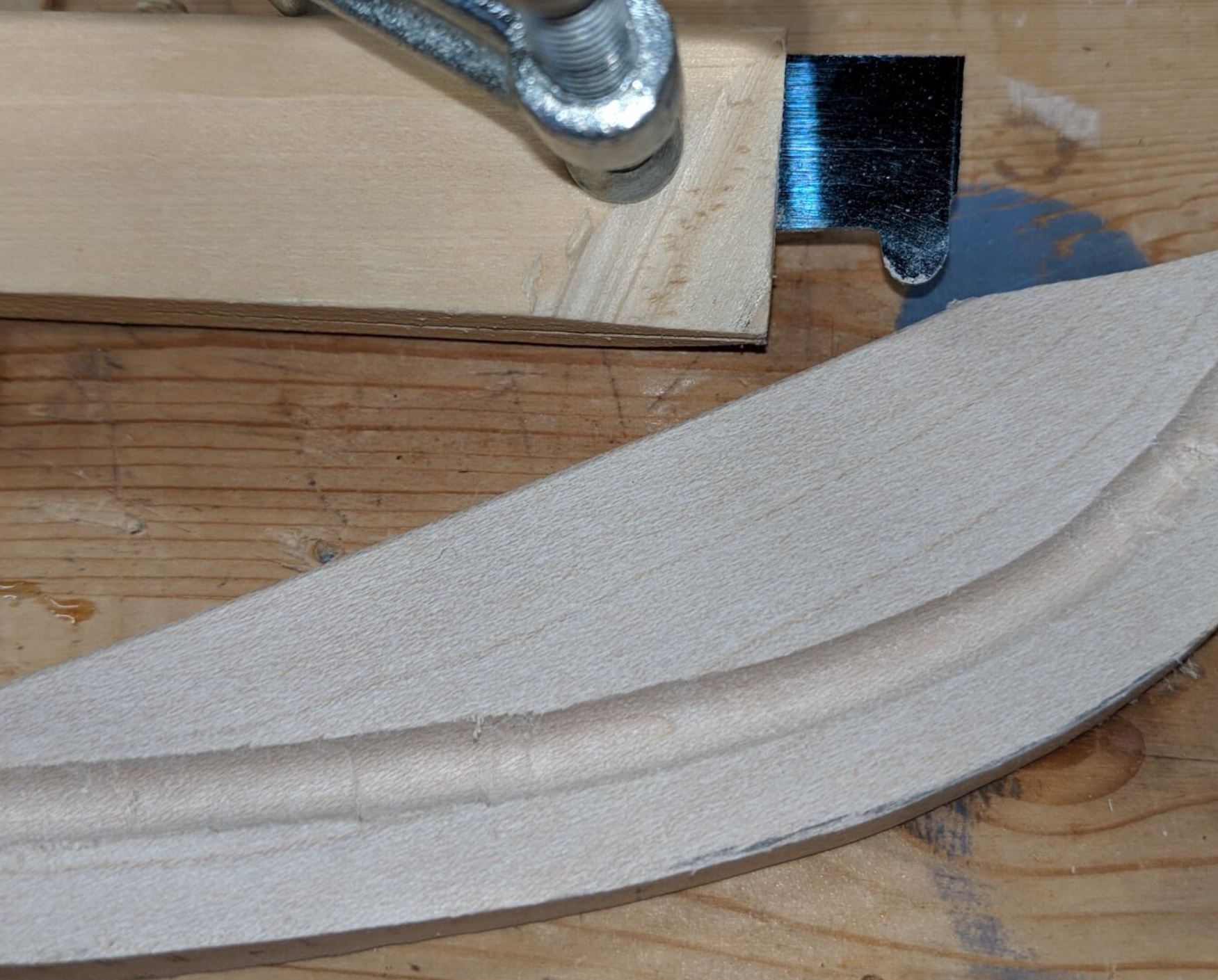I'm trying to build a replacement for a coffee table drawer that went missing years ago. I remember the drawer front matched the profile of the skirt on the table, so I was able to make a template from the other side and reasonably match it with a band saw and belt sander.
However, I am stuck on how to cut the groove that is parallel to the curved edge. I'm not sure how I would go about cutting that groove since it has to follow a 3 dimensional contour. If it was straight it would seem like maybe a job for a router plane with a fence, but the only ones I have seen wouldn't work well on a curve like this.
What tool or technique do I need to cut a curved groove like this?
(Update)
Follow up:
I ended up making a rather unsophisticated scratch stock with some "blanks" I found on Amazon, a piece of scrap wood from the bin, and a mini c-clamp. I just rough beveled the end, cut a groove down the middle, shoved the blade in it and clamped it in place.
It somewhat worked on a piece of scrap, cutting well in the areas where it ran with the grain, but choppy and hard to control as it cut across the grain on the hard maple. I'm sure a better edge and more practice would help. I didn't smooth the edge any better than what you get with a diamond file.
Once I iron out the bugs, I think this will do the trick. Thanks to those who suggested it.




